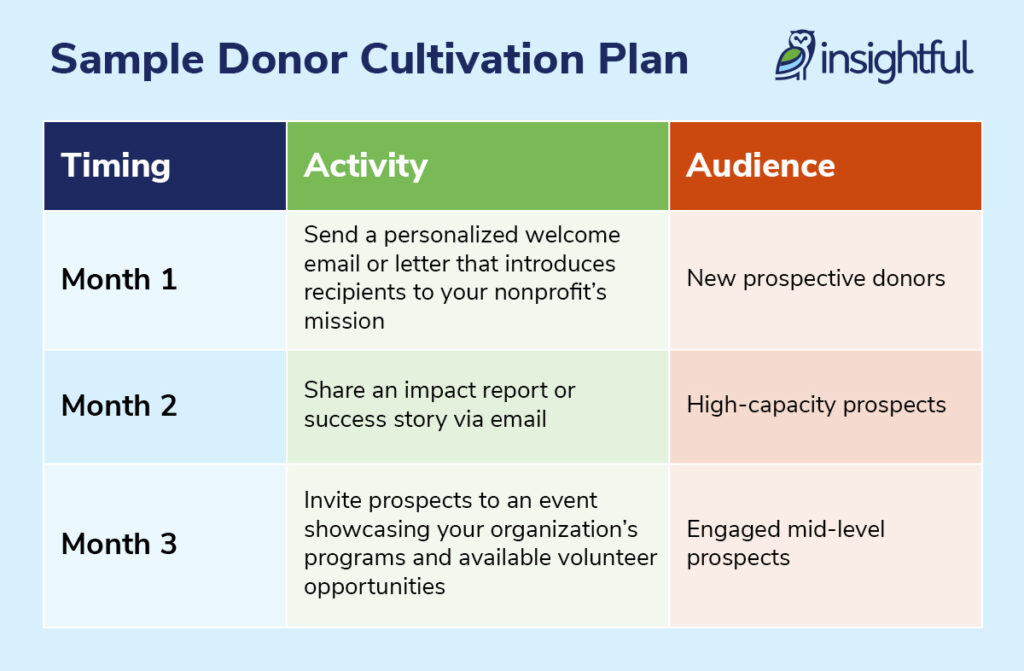
For many fundraising activities, timeliness is key. If you’ve ever planned a marketing campaign, donor stewardship strategies, or an upcoming fundraising event, you know it takes a detailed calendar to turn your nonprofit’s goals into reality.
However, your organization’s financial needs also have deadlines—bills with due dates, beneficiaries with pressing needs, and more. You may end up scrambling to fast-track your fundraising efforts if they don’t align with your goal deadlines.
Fortunately, there are several ways your nonprofit can speed up its processes to meet fundraising goals quickly. Let’s review some strategies you can use to accelerate your campaigns.
1. Automate Donor Intelligence
Donor cultivation, solicitation, and stewardship all require thorough research. The more you know about your existing or prospective donors, the more you can personalize your communications.
If your outreach is held up by the lengthy research process, consider using automated tools like donor news alerts to gain donor intelligence. Donor news alerts services minimize manual research by automatically delivering real-time insights, such as:
- Philanthropic activity: Get notified when donors make a public gift or become involved in philanthropic initiatives. This data helps you identify individuals interested in similar causes and send targeted messaging based on their charitable interests.
- Obituary notices: Receive a notice when obituaries have been posted for individuals connected to your organization. Tracking obituary data provides insight into the appropriate times for sending condolences and other heartfelt messages to strengthen donor relationships.
- SEC filings: Access a direct statement of supporters’ wealth, assets, and holdings. When your nonprofit becomes aware of a sudden increase in a prospect’s assets, you can act quickly on signs of financial readiness.
All of these insights can inform smarter—and faster—outreach. For example, let’s say one of your organization’s major donors, who was a prominent community member, passed away. Donor news alerts scan news and information sources to alert you when an obituary becomes available, and your team can reach out to the family with your condolences.
Perhaps the donor’s family members will want to give to your organization in his honor. Or, they urge loved ones to donate to your nonprofit in lieu of flowers. Your team can respond appropriately without having to scan the local newspaper yourself.
2. Create a Sense of Urgency in Your Marketing Materials
Imagine this: You receive two emails back-to-back. One subject line reads, “Please Donate To Our Cause,” while the other says, “Hurry, There’s Only One Hour Left To Help!” Which email would you open first?
Research shows that donor behavior is driven most strongly by two factors: personal connections and a sense of urgency. Limited-time appeals prompt faster action from donors, meaning your nonprofit should incorporate deadlines into your fundraising appeals.
While the exact language you use will depend on the marketing channel and audience, your donation page is a strong place to start. If you use fundraising software like CauseMatch to host your donation page, you’ll likely have access to elements such as:
- Countdown timers that highlight how much time donors have left to give before your fundraising deadline arrives
- Fundraising goal thermometers, or progress bars, that illustrate your progress toward your fundraising goals
- Recent donor panels that showcase who has recently given to your organization and how much they gave
To ensure your audience follows through with a donation after seeing your urgent message, make your appeal compelling. Getting Attention describes a four-part framework for compelling messages—connected to a cause, rewarding, actionable, and memorable (CRAM). Incorporating these elements clarifies the audience’s next steps, so they’re eager to get involved.
3. Simplify the Donation Process
Did you know that 60% of potential donors leave a nonprofit’s donation page before completing the transaction? In addition to making urgent appeals, you should make it easy for donors to take the next step. An easy donation process improves donors’ experiences and allows your nonprofit to acquire donations quickly.
Again, the right fundraising software is key, as tools like CauseMatch will make the donation experience as frictionless as possible. This might involve using:
- Mobile-friendly donation pages so donors can give directly from their mobile devices
- One-click giving options with suggested amounts so users can quickly submit a gift
- Pre-filled forms for returning donors so your long-time supporters don’t have to resubmit their information every time they give
Personalization should also affect the fundraising ask itself. Although you want to meet your fundraising goals quickly, not every supporter will give a monetary donation to your nonprofit. According to Insightful Philanthropy’s prospect research guide, your solicitation plan should account for different outreach goals, such as inviting supporters to attend an event, sign up for volunteer opportunities, or connect with your organization in some other way.
4. Encourage Donors To Spread The Word
Think back to our earlier example of different email subject lines. Let’s say one email came from a large organization, but the other was forwarded from a close personal friend. Most people are more receptive to appeals from people they trust than individuals or organizations they’re unfamiliar with.
Word-of-mouth and peer influence can skyrocket your campaign’s popularity, and the best way to tap into it is by equipping your donors with shareable content. For example, social media posts are easily shareable with buttons built into the platform. Share eye-catching infographics with data about your nonprofit’s work or compelling photos of your beneficiaries.
Most social media platforms also provide built-in analytics tools that can help your nonprofit track mentions and shares so you can see how your efforts are working.
5. Plan Your Outreach In Advance
With a predetermined cadence for reaching your target audience, you can send communications out faster (or even schedule them to send on their own!). Depending on which stage of the donor lifecycle your recipients are in, you can create a plan for reaching them with messages that will resonate.
For example, you can reach prospective donors with a well-rounded cultivation plan that includes:

- Timing: When will you send your message? For example, you might reach out one month after identifying a prospect or three months after a prospect has engaged with your nonprofit.
- Activity: What will your message say? A new prospect might receive educational content on your nonprofit’s mission, while an engaged prospect could be invited to an event.
- Audience: Who will receive your message? Segment your audience according to their shared characteristics, such as grouping together prospects who have never heard of your organization and those who are familiar with your cause.
Your marketing team should have different outreach strategies for each fundraising effort. Once you’ve established a relationship with prospective donors, you’ll need to move into a solicitation plan that involves careful appeals that will resonate with prospects. For individuals who have donated already, you might follow a detailed stewardship matrix that deepens your connection with supporters to keep them engaged in the long term.
To meet your fundraising goals quickly, your nonprofit needs a combination of thoughtful outreach efforts and the right technology. By investing in prospect research tools and donor communication software, you can easily organize compelling communications that yield quick responses.

Sarah Landman, Executive Vice President, Insightful
Sarah has helped raise over half a billion dollars for nonprofits during her 20-year career. She currently serves as the Executive Vice President of Insightful, a platform that helps nonprofits stay on top of crucial donor news in order to deepen relationships and grow giving. She holds an M.A. in Philanthropy and writes and speaks on the topic of Millennial Philanthropy at regional and international conferences. Sarah was named 40 under 40 by Gulfshore Business Magazine and serves on the Board of Trustees of Saint Mary’s University of Minnesota, and Catholic Charities, Diocese of Venice, FL.


